NEWS RELEASE.
June 29, 2012: Vancouver, B.C. – Oracle Mining Corp. (Stock Profile – TSX:OMN & OTCQX:OMCCF) announced Cong Bin Liu as a new addition to the board.
Mr. Liu is the chairman of RichStone Investment Co. Ltd., a company focused on investment in the exploration and development of base metals, oil and coal. Established in 1997, RichStone has 11 subsidiaries, plus area and administrative offices and research centres throughout China, employing nearly 1,000 people. RichStone owns 19.9 per cent of Oracle Mining’s outstanding common shares and is the corporation’s largest shareholder.
“Since our initial meetings with RichStone, our partnership has continued to grow and strengthen,” said Mr. Eagland, Oracle Mining’s executive chairman. “We are humbled by the support and dedication that Mr. Liu and RichStone have shown towards the Oracle Ridge copper mine project, and we look forward to strengthening our partnership as we return the mine to production.”
To read more – CLICK HERE.
CompanyFeed™

There may come a time in the not too distant future when copper will be in shorter supply than the current shortage of rare earth elements (REEs). While this is not the situation today, an examination of the longer-term outlook for copper indicates this scenario might not be so far-fetched.
According to the International Copper Study Group (ICSG), a global production deficit of 92,000 metric tonnes was recorded for copper as of January 2012. Furthermore, ICSG estimates that worldwide usage in 2011 increased by 3.2% over the previous year while mine production remained unchanged. Market commentator Jack Lifton says the world has essentially ignored the need for copper, which he calls “the nerves of our civilization” because of its importance to a modern society. In a recent speech, Lifton says if this trend continues, where global copper production is less than the increase in demand, the copper deficit could make the REE shortages seem minor by comparison.
The REE deficit highlights a growing concern about how other minerals and metals might be similarly affected. It is not by chance that China became the world’s supplier of rare earth minerals. It promoted mining as economic reforms advanced in the country, foreseeing the need for metals in a rapidly urbanizing society. China encouraged all types of mining, including REEs, and became so efficient that other countries stopped producing REEs and purchased supplies from China instead. China now produces 97% of the global REE supply and has a captive market for its products. When China began to restrict exports in 2010, the outcry from countries such as the US and Europe captured media headlines around the world. Yet I believe our central focus should not be on China’s monopoly on rare earths but on why such a deficit exists in the first place.
A number of factors are constraining the advancement of mineral projects around the world. Top of mind is the ongoing market volatility related to the debt crisis in the Eurozone and the continuing effects from the global economic recession. As a result, investors are now demanding a return on capital and limiting their exposure to further risk.
Recently, Rio Tinto’s chief executive Tom Albanese addressed investor concerns over spending discipline saying miners are aware of how important this is to shareholders. However, he pointed out that the longer-term impact of spending less on resource development and expansion will be less metal supply in the future.
In an article from The Australian newspaper, Albanese was quoted as saying, “Each of you want your money back, you want buybacks, dividends and you don’t want us spending as much money, even if we’re making money… We respect that, we’re hearing it, we know our peers are hearing it, but that means there’s going to be less supply coming into the sector.”
In North America where many of the advanced technologies and applications that use REEs and other minerals originated, there is a dearth of resource developments due to environmental activism, lengthy permitting processes and even litigation. Stringent environmental reviews and regulations are necessary, but more and more the anti-mining sector is simply relying on unsubstantiated rhetoric, spending their funds on advertising and money-raising and nothing on science or research. This anti-development stance is a large contributing factor in the direct loss of high-paying resource employment and the indirect loss of many manufacturing jobs related to the uses and applications of REEs and other minerals. REE applications are at the leading edge of many advanced and energy efficient technologies, such as permanent magnets, rechargeable batteries, etc. China and other primary metal or mineral producers are requiring manufacturers who need their minerals and metals to set up manufacturing plants in their countries for export to the more developed countries of the west, thereby moving these manufacturing jobs out of the US and other western countries.
Additional factors that could play into the shortfall of REEs and other minerals include the escalating costs of developing a mine and the decreasing ore grades of current producing mines. Labour and material costs are rising and regulatory processes now take longer than at any other time in history, requiring more capital and time to put a mine into production.
Minerals and metals are essential to our quality of life, particularly copper. Copper is a critical metal that has strategic value as a contributor to our economic growth and development. It is important that we examine how to increase our production and safeguard our access to copper as well as other essential metals so we are not solely dependent on external sources to meet our needs.
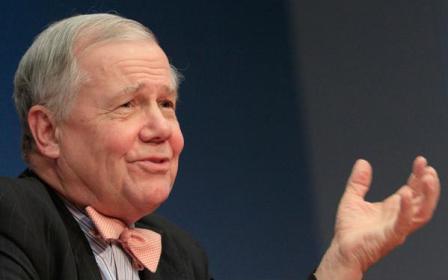
On April 20th 2012, a press release was issued by advanced junior gold exploration company, Spanish Mountain Gold (Stock Profile – TSXV:SPA). It indicated the appointment of a new director to the company, namely, famed commodities investor, Jim Rogers.
Up until that date, it was this author’s understanding that Rogers carried a disinterest toward mining company concerns, instead opting to invest in physical commodities themselves.
Why would Jim Rogers become involved with a small gold exploration company, and why Spanish Mountain Gold? Is there a merit to the company which he has identified ahead of other investors? In the process of answering these questions, I found myself speaking directly with Jim Rogers himself, as well as a grapevine of legendary investors of the last century, all of whom have been quietly building structural connections to and within, Spanish Mountain Gold.
In the fall of 2009, legendary U.K. based investor Ian Watson (former executive committee member of Burns Fry Ltd. – which assimilated into BMO Nesbitt Burns), felt compelled to reenter the junior gold mining sector. Founder of Galahad Gold, a junior mining investment vehicle which fetched a 66% average annual IRR for shareholders during its lifespan, Watson carries with him a team of associates and investment partners which include the likes of internationally known Jim Rogers, U.K. investor & former corporate raider, Jim Slater, and many other highly influential investors who have participated in his trail of success.
During an interview with the author, Watson rattled off his junior resource investment vehicle criteria without holding anything back. He stated, “The deposit should be in a reasonably safe political territory, it should have a strong resource position, reserves are ideal–but 43-101 compliant resources are sufficient in most cases, there shouldn’t be any serious environment problems on the horizon, there should be a strong balance sheet with cash and little to no debt and no major future capital liabilities, the future production should be unhedged, the cost per oz. of gold produced and the grade of course are critical factors, a very prospective deposit open to discoveries in all directions including depth, and lastly, management that has the ability to take a project through to production.”
Like the floating aroma of a thanksgiving turkey, Watson’s new investment attracted the attention and corresponding interest of a group of his associates: Jim Slater, Don Coxe, Jim Rogers, and Morris Beattie. Slater, easily one of the most famous U.K. investors during the 1960s and 70s, followed Watson’s lead by taking what has now grown to an over 10% interest in the company, while Coxe, Rogers, and Beattie all took positions on the board of directors.
Coxe, strategy advisor to BMO Financial Group, and TopGun Lifetime Achievement Award winner from Brendan Wood International, was recently asked by the author his thoughts on joining the company. He said, “[It’s] the people behind it…we share the same sorts of views on the commodities outlook, these are gentlemen of quality, success…By definition they do not engage in trivial ventures, their record is of identifying great wealth before other people do. They are serious people.”
The answer to that question might be found in an excerpt of Coxe’s “Rule of Page Sixteen” investment philosophy, which states, “Never invest on the basis of a story on Page One–that is the efficient market. Invest on the basis of a story on Page Sixteen—that’s on its way to Page One.”
If investment track records are any guide, Rogers, Coxe, Watson, and Slater, all legendary investors and stewards of capital, may help forge the company into one worth remembering. Additionally, Rogers appears to have identified solid merits which warrant his engagement. Based on his example and that of the board of directors, Spanish Mountain may be a long term bet worth considering. As Coxe further says, “I look for the big themes, the ones historians will be writing about in a hundred years—the Page Sixteen stories.”
NEWS RELEASE.
June 25, 2012: Vancouver, BC – Goldgroup Mining Inc. (Stock Profile – TSX: GGA & OTC:GGAZF) announced final assay results from the completed underground tunnel development at the Company’s 100%-owned Caballo Blanco gold project in Veracruz, Mexico.
Both the recently completed main tunnel and crosscut tunnel west of the main tunnel encountered mineralized, massive and brecciated massive silica. Assay results from the channel sampling in the main tunnel returned 24.2 metres of 1.09 g/t gold and the crosscut tunnel returned 19.35 metres of 1.48 g/t gold. The average gold grades of the mineralized zones in the tunnel correspond well with the grades of the drill holes completed in the area surrounding the tunnel, and demonstrates strong gold grade continuity through this section of the Caballo Blanco mineralized zone.
These results provide confirmation of a robust resource model, further de-risking the Caballo Blanco project. A sufficient supply of mineralized material has been stockpiled from the underground tunnel development for all anticipated remaining metallurgical test work at Caballo Blanco.
To review the tunnel assay result – CLICK HERE.
CompanyFeed™
NEWS RELEASE.
June 25, 2012: Vancouver, B.C. – North American Tungsten Ltd. (Stock Profile – TSXV:NTC) announced the CanTung Mine has restarted production as of today, following the reopening of the Nahanni Range Road.
Stephen Leahy, Chairman & CEO stated “Having three bridges installed and functioning in just over a week’s time is an exceptional accomplishment. This was a Team effort, led by the swift action taken by the Yukon Territorial Government, the efficient work and dedication of the Contractor, KPI Northern Ltd. and of course our own personnel, whose vigilant efforts kept us prepped for re-start, all the while dealing with significant logistical issues.”
The Company has recommenced customer shipments – to read more CLICK HERE.
CompanyFeed™
PRESS RELEASE.
June 23, 2012: Vancouver, BC – Balmoral Resources Ltd. (Stock Profile – TSXV:BAR) announced the additional of social media applications and video to their corporate website.
Also added to the Balmoral website is Darin Wagner’s interview with Mike Niehuser, Founder of Beacon Rock Research. In the interview, Mr. Wagner discusses some of the challenges facing the junior mining equity markets and Balmoral’s upcoming summer drill programs.
To watch the interview click the video below:
CompanyFeed™
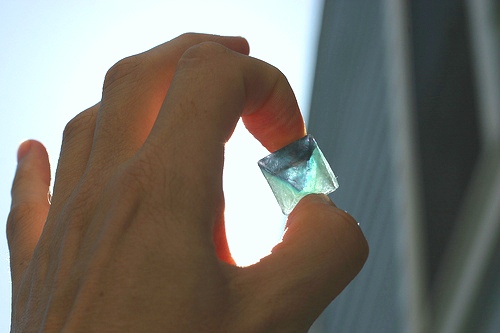
Fluorspar is the commercial name for the mineral fluorite and was included in the list of 14 raw materials labeled as “critical” by an expert group chaired by the European Commission of the European Union (EU).
World reserves of fluorspar resources are approximately 500 million tons of contained fluorspar.
Globally, the annual consumption of fluorspar is approximately 5.6 million tonnes with an estimated value of US $1.6 billion. Pricing for 97% fluorspar is currently estimated at US$400 per ton.
Fluorspar is a halide mineral composed of calcium fluoride and is derived from the Latin root “fluo” (meaning “to flow”) because the mineral was discovered to decrease the viscosity of slag in iron smelting. In 1852, fluorite gave its name to the phenomenon of fluorescence. Today, fluorspar is also used in aluminium production, fire-retardant protective clothing, Teflon for non-stick frying pans, refrigerants and air conditioning, lithium batteries and as a component of environmental technologies.
In the last few years market conditions improved enough that some African fluorspar mines, which were forced to shut down in 2009 because of low demand and low prices, were able to resume production in 2010. Coupled with a recent decrease in fluorspar exports from China, companies outside of China are attempting to replace lost Chinese export supplies by expanding capacity at current mines or by developing new fluorspar mining projects. It is estimated that unless China finds new reserves of fluorspar, at their current rate of extraction, they would run out of domestic supply within 7 years.
In Mexico, the world’s second largest fluorspar producer accounting for 18.4% of global supply, companies are developing new fluorspar mining concessions. Development work also continues in the U.S., and Canada and exploration activities are ongoing, particularly in Sweden.
Western Kentucky, which until the 1970’s the Kentucky-Illinois Fluorspar District produced more than 75% of the world’s supply, has seen a rebirth in activity in the past year. While north of the border, Canada Fluorspar (Stock Profile – TSXV: CFI) is getting close to reopening the St. Lawrence fluorspar mine in southeastern Newfoundland, Canada with planned output of 126,000 tonnes of acid grade fluorspar per year.
Some additional publicly traded producers of fluorspar related products include:
- Mosaic (Stock Profile – NYSE: MOS).
- DuPont (NYSE:DD) – a world leader in fluorine chemistry.
- Arkema S.A. (OTCPK: ARKAY).
- The Linde Group (OTC: LNEGY) – a leading fluorine gas producer.
- Mexichem SAB (OTC:MXCHF).
- Fluormin (LON:FLOR)
Finding publicly traded companies with an exposure to fluorspar is as difficult as spelling the word “fluorspar”. If supply constraints continue out of China, with a limited number of publicly traded companies available to investors in the space, a number of new exploration juniors may very well shine a fluorescent light on the sector in the coming months.
PRESS RELEASE.
June 21, 2012: Vancouver, B.C. – MAG Silver Corp. (Stock Profile – TSX:MAG & NYSE MKT:MVG) recently announced the results of an updated National Instrument 43-101 (“NI 43-101”) compliant Preliminary Economic Assessment for the Juanicipio Project in Zacatecas State, Mexico.
For more details – CLICK HERE.
MAG’s President and CEO Dan MacInnis held a conference call on Thursday, June 14, 2012. Mr. MacInnis presented the results of MAG’s Updated Preliminary Economic Assessment Study for development of the Juanicipio Project. A question and answer period followed the presentation.
To listen to the conference call click play:
CompanyFeed™

If you haven’t heard there is an election in Greece on Sunday. If he wins, 37 year old leftist SYRIZA leader Alexis Tsipras promises to reject austerity and the crippling terms of the 130 billion euro bailout.
On the right, the other front-runner is 61 year old New Democracy leader Antonis Samaras. Samaras says rejecting the terms of the bailout would send Greece crashing out of the single currency and condemn it to even greater economic calamity.
So who is Alexis Tsipras? Tsipras was born July 28, 1974, in Athens. He studied civil engineering at the National Technical University of Athens and after his graduation in 2000 he worked as a civil engineer in the construction industry.
Politically, he joined the Communist Youth of Greece in the late 80s. In the early 90s, as a student in high school, he was politically active in the uprising against a controversial law of then minister Vasilis Kontogiannopoulos.
As a university student he joined the ranks of the left movement and was ultimately elected member of the Central Council of the National Students Union of Greece in the mid-90s.
After the departure of the Communist Party of Greece from Synaspismos, Tsipras remained in the radical new left party. He was the first person to hold the leading position (political secretary) of the youth wing of Synaspismos.
Years later, he was elected chairman of Synaspismos during the fifth party congress on February 10, 2008. When he was elected president of Synaspismos he was 33, thus becoming the youngest ever head of a Greek parliamentary political party.
In the 2009 Greek legislative election he was elected a member of the Hellenic parliament and was voted unanimously, by the secretariat of the SYRIZA (a coalition of thirteen left-wing and radical left political parties) as the head of its parliamentary group.
The video below is a recent interview where Tsipras discusses Greece’s future in the euro zone.
NEWS RELEASE.
June 14, 2012: Vancouver, B.C. – MAG Silver Corp. (Stock Profile – TSX:MAG & NYSE MKT:MVG) announced the results of an updated National Instrument 43-101 (“NI 43-101”) compliant Preliminary Economic Assessment for the Juanicipio Project in Zacatecas State, Mexico.
The Updated Preliminary Economic Assessment was commissioned by Minera Juanicipio S.A. de C.V., a Mexican joint venture company (the “Joint Venture”), owned 44% by MAG and 56% by Fresnillo plc (“Fresnillo”) and was carried out by AMC Mining Consultants (Canada) Ltd. (the “AMC Study”).
The AMC Study defines the Juanicipio Project as an economically robust, high-grade underground silver project exhibiting minimal financial or development risks that will produce an average of 15.1 million payable ounces of silver over the first full six years of commercial production and 10.3 million payable ounces per year over a 14.8 year total mine life.
For more details – CLICK HERE.
MAG’s President and CEO Dan MacInnis will hold a conference call on Thursday, June 14, 2012 at 1:00 pm Eastern time (10 am Pacific time). Mr. MacInnis will present results of the Updated Preliminary Economic Assessment Study for development of the Juanicipio Project. A question and answer period will follow the presentation.
To participate, dial BC local: (778) 371-9827; TO local: (647) 427-7450 or toll-free (888) 231-8191 and request access to the “MAG Silver Conference Call”.
A replay of the conference call will also be available by calling 416-849-0833 or 1-855-859-2056, conference ID: 87907409.
CompanyFeed™
NEWS RELEASE.
June 13, 2012: Johannesburg, South Africa – Witwatersrand Consolidated Gold Ltd. (Wits Gold – Stock Profile – TSX:WGR) announced the completion of a positive pre-feasibility study (PFS) on its De-Bron Merriespruit (DBM) Project, situated in the southern Free State goldfield of the Witwatersrand Basin. Among the positive developments that were highlighted by the PFS was the delineation of a Probable gold Reserve of 23.5Mt at a grade of 4.05g/t Au (3.1Moz). These Reserves are contained within the Project’s Indicated Resources of 26.7Mt at 5.8g/t Au (4.99 Moz).
Summary of PFS highlights:
- Indicated Resource of 26.7Mt at 5.8g/t Au (4.99 Moz), containing Reserves of 23.5Mt at 4.05g/t Au (3.1 Moz).
- Average annual gold production of 200 000oz over an 18-year life of mine.
- Production cash costs of US$628/oz.
- First gold production 47 months after shaft sinking commences.
- Peak capital funding of ZAR2.37 billion (US$296 million at ZAR8/US$)
- At ZAR400 000/kg Au (US$1 555/oz & ZAR8/US$) pre-tax NPV(5%) ZAR7.3 billion (US$909 million), IRR 28.0%.
- Shallow underground mine design comprising a twin shaft system to 660 metres.
- Semi-mechanised option increases IRR to 30.9% (at the above prices) and pre-tax NPV(5%) to ZAR10.2 billion (US$1.3 billion).
- Additional shallow Inferred Resources of 5.97Mt at 5.7g/t Au (1.1Moz) readily mineable from current mine design – this will be prioritised during feasibility drilling.
CompanyFeed™
NEWS RELEASE.
June 13, 2012: Vancouver, BC – Balmoral Resources Ltd. (Stock Profile – TSXV:BAR) announced numerous high grade gold intercepts from expansion drilling on its Martiniere West Gold Zone in Quebec. The final eight holes of the winter drill program were reported. Today’s results further expand the vertical, horizontal and down-plunge components of the West Zone. The West Zone has now been extended along strike at shallow depths to over 375 metres, has been intersected to a vertical depth of over 250 metres and down plunge for over 340 metres. The Zone remains open in all directions.
In addition to intersecting the West Zone at depth, drill holes MDW-12-55 and MDW-12-57 to MDW-12-59, collared northwest of the West Zone, all returned broad, near surface intersections of anomalous gold mineralization. These intercepts range from 13.40 to 18.10 metres in down-hole thickness and occur in an area of the property which had not been tested by previous drilling. These new discoveries further expand the scale and scope of the Martiniere Gold System of which the Martiniere West Zone is one component.
Summary
- High-grade Martiniere West Zone extended to over 375 metres along strike, over 250 metres vertical depth and to over 340 metres down plunge.
- West Zone remains open for expansion in all directions.
- New, broad, near surface gold occurrences intersected.
- Summer 2012 Drill Program Underway.
CompanyFeed™
NEWS RELEASE.
June 12, 2012: Vancouver, BC – Goldgroup Mining Inc. (Stock Profile – TSX: GGA & OTC:GGAZF) announce that it has completed the next stage of its permitting process at the Caballo Blanco project by submitting responses to the list of comments from the Secretaría de Medio Ambiente y Recurso Naturales (“SEMARNAT”), also known as the Ministry of Environmental and Natural Resources, received on March 13, 2012, regarding its previously submitted Environmental Impact Statement (“EIS”).
Goldgroup’s responses were filed within the 60 working day timeframe provided by SEMARNAT. The responses are standard procedure in the environmental permitting process and are meant to clarify certain aspects of Goldgroup’s permit application, as well as facilitate SEMARNAT’s review of the EIS. The environmental permitting process is governed by Mexican federal law and regulations.
As previously disclosed, Goldgroup requires two independent environmental permits in order to commence construction at the Caballo Blanco project. The two permits are the EIS and the Estudio Técnico Justificativo para Cambio de Uso de Suelo” (“ETJ”), also known as the Change of Soil Use Permit. To learn more about the permitting process – CLICK HERE.
CompanyFeed™
NEWS RELEASE.
June 12, 2012: Montreal, Quebec – Stornoway Diamond Corp. (Stock Profile – TSX: SWY) announced the filing on SEDAR of a National Instrument (“NI”) 43-101 technical report representing the first Mineral Resource estimate for the Q1-4 kimberlite pipe located at Stornoway`s 100% owned Qilalugaq Diamond Project in Nunavut, Canada. The Qilalugaq Diamond Project includes the Qilalugaq kimberlite pipes and the Naujaat system of kimberlite dykes, and has been the focus of ongoing exploration and assessment work by Stornoway since it was optioned and subsequently acquired from BHPB Billiton Diamonds Inc. (“BHPB”) in July 2006 and July 2010, respectively.
Highlights of the NI 43-101 technical report include:
- a total Inferred Mineral Resource for the Q1-4 kimberlite pipe of 26.1 million carats from 48.8 million tonnes total content of kimberlite with an average +1 DTC total diamond content of 53.6 carats per hundred tonnes (cpht) extending from surface to a depth of 205m;
- additional resource upside has been identified in the form of a target for further exploration for the Q1-4 kimberlite pipe of between 7.9 to 9.3 million carats from 14.1 to 16.6 million tonnes total content of kimberlite with an average +1 DTC total diamond content of 56.1 cpht, extending from 205m depth to 305m depth.
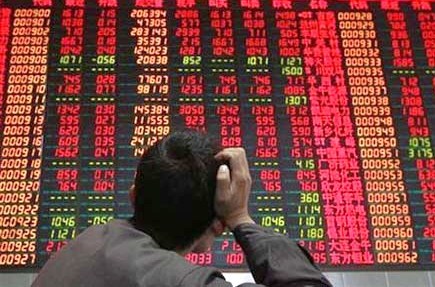
According to Reuters, this weekend Spain is expected to ask the euro zone for help with recapitalizing its banks. Spain will be the fourth nation in the euro zone to seek a bailout since Europe’s debt crisis began.
First, Ireland received an 85 billion euro bailout package in November, 2010. Then in May, 2011, Portugal received a 78 billion euro bailout while Greece, throughout the crisis, has been receiving ongoing support.
Senior EU and German officials confirmed that the deputy finance ministers from the single currency area would hold a conference call on Saturday morning to discuss a Spain’s request for aid, although no figure for the assistance has yet been fixed.
Later the Eurogroup, which consists of the euro zone’s 17 finance ministers, are expected to hold a separate call to discuss approving the request.
The news today comes after Fitch Ratings cut Madrid’s sovereign credit rating by three notches to BBB citing the Spanish banking sector’s exposure to bad property loans and contagion from Greece’s debt crisis as the reasons for the decrease.
Fitch estimates Spain will need at least 50 billion euros in capital to shore up its banking system and as much as 100 billion euros (9 percent of Spain’s GDP) under a more extreme scenario similar to that of Ireland in 2010.
When it was reported that Portugal would received a bailout last year the financial community’s response was positive to the news and both the euro and the European markets rallied. Can we expect a similar rally this time? Perhaps, but with the Greek election slated for June 17th more uncertainty is right around the corner and it’s a guess which direction the markets will go.
In volatile bear markets there are a few ways for investors to protect their wealth. A move out of equities and into bonds (preferably not Greek bonds), a move into cash and “sit tight” or, for investor with more appetite for risk, buying exchange traded funds (ETFs) that are inversely correlated to the markets.
Many investors also consider gold and silver as a “safe haven” and a “crisis hedge” but we tend to look at precious metals as a fiat money “liquidity hedge”.
ETFs are investment funds traded on stock exchanges, much like a stock. ETFs hold assets such as stocks, commodities, or bonds, and trade close to their net asset value over the course of the trading day. Many are tracked to indexes like the DJIA or the TSX. Inverse ETFs are negatively correlated with price movements so they will increase in price when their corresponding assets decrease in price.
Specific examples of actively traded ETFs in Canada that go up when the markets go down are Horizons Betapro S&P/TSX-60 Bear Plus 2x leveraged ETF (TSX:HXD) and the Horizons Betapro S&P 500 VIX Short Term Futures ETFs (TSX:HUV). And if you really want a wild ride, there is a 2x leveraged version of “HUV” which trades under the symbol “HVU”.
For a complete list of ETFs in Canada – CLICK HERE.
In the U.S., the ProShares Short S&P 500 trades under the symbol “SH” while the iPath S&P 500 VIX Short Term Futures ETF trades under the symbol: “VXX” on the NYSE Arca. iShares is the largest issuer of ETFs in the United States and globally. SPDR (known as “spiders”), ProShares and PowerShares are also well know families of ETFs.
To hedge a bad market – CLICK HERE – for a list of inverse ETFs in the United States.
Note:
The volatility index (US symbol: VIX) is commonly known as the “fear index” because a high VIX represents uncertainty about future equity prices. The index is calculated by the Chicago Board Options Exchange using the price of near-term options on the S&P 500 index. The VIX is volatile and has a high negative correlation with the S&P 500 Index – for more on the VIX – CLICK HERE.
NEWS RELEASE.
June 8, 2012: Montreal, Quebec – Stornoway Diamond Corp. (Stock Profile – TSX: SWY) announced the recent successful completion of public consultations on the Renard Diamond Project held by the Canadian Environmental Assessment Agency (“CEAA”), the Department of Fishery and Oceans, Environment Canada and Natural Resources Canada. The consultations were held in Chibougamau and Mistissini between June 5th and 7th to solicit public feedback in relation to the ongoing assessment of the Renard Environmental and Social Impact Assessment (“ESIA”) by the federal government regulators. The consultations were well attended, and the responses received were overwhelmingly positive.
The Renard Diamond Project falls under the environmental protection regimes of the Canadian Environmental Assessment Act and the James Bay and Northern Québec Agreement (the “JBNQA”). The Renard ESIA was filed with both the CEAA and the Quebec Ministère du Développement Durable, de l’Environnement et des Parcs (“MDDEP”) on December 28, 2011. Public consultations on the ESIA, held separately by the federal and Quebec regulators, are an important step in the mine permitting process, and are designed to gauge the overall social acceptability of the proposed development. It is currently expected that public hearings on Renard to be hosted by the Review Committee of the JBNQA (“COMEX”) will be scheduled for later in the summer, making the project eligible to receive its Global Certificates of Authorization thereafter.
The Renard ESIA, as well as the project’s Environmental Baseline Study and Restoration Plan, are available in their entirety on Stornoway’s website: CLICK HERE.
CompanyFeed™

Between 1979 and 2011, Soros has given away over $8 billion to human rights, public health, and education causes. Now he’s giving some free advice to European policy makers.
In his Remarks at the Festival of Economics, Trento Italy earlier this month, Soros believes that Germany must show leadership to preserve the European Union and thinks they only have a three month window in which to do it.
His latest speech is a follow-up to an October 2011 open letter which Soros entitled, “As Concerned Europeans We Urge Eurozone Leaders to Unite” whereby he calls for a stronger economic government for Europe using federal means and warns against the danger of nationalistic solutions to the economic crisis. The letter outlines three key areas where change is required:
- establish a common treasury that can raise funds for the euro zone as a whole and ensure that member-states adhere to fiscal discipline;
- reinforce common supervision, regulation and deposit insurance within the euro zone;
- develop a strategy that will produce both economic convergence and growth because the debt problem cannot be solved without growth.
The Maastricht Treaty was fundamentally flawed, demonstrating the fallibility of the authorities. Its main weakness was well known to its architects: it established a monetary union without a political union.
When the euro was introduced the regulators allowed banks to buy unlimited amounts of government bonds without setting aside any equity capital; and the central bank accepted all government bonds at its discount window on equal terms. Commercial banks found it advantageous to accumulate the bonds of the weaker euro members in order to earn a few extra basis points. That is what caused interest rates to converge which in turn caused competitiveness to diverge. Germany, struggling with the burdens of reunification, undertook structural reforms and became more competitive. Other countries enjoyed housing and consumption booms on the back of cheap credit, making them less competitive.
Then came the crash of 2008 which created conditions that were far removed from those prescribed by the Maastricht Treaty. Many governments had to shift bank liabilities on to their own balance sheets and engage in massive deficit spending. These countries found themselves in the position of a third world country that had become heavily indebted in a currency that it did not control. Due to the divergence in economic performance Europe became divided between creditor and debtor countries.
It took some time for the financial markets to discover that government bonds which had been considered riskless are subject to speculative attack and may actually default; but when they did, risk premiums rose dramatically. This rendered commercial banks whose balance sheets were loaded with those bonds potentially insolvent. And that constituted the two main components of the problem confronting us today: a sovereign debt crisis and a banking crisis which are closely interlinked.
The euro zone is now repeating what had often happened in the global financial system. There is a close parallel between the euro crisis and the international banking crisis that erupted in 1982. Then the international financial authorities did whatever was necessary to protect the banking system: they inflicted hardship on the periphery in order to protect the center.
Now Germany and the other creditor countries are unknowingly playing the same role. The details differ but the idea is the same: the creditors are in effect shifting the burden of adjustment on to the debtor countries and avoiding their own responsibility for the imbalances. Interestingly, the terms “center” and “periphery” have crept into usage almost unnoticed. Just as in the 1980’s all the blame and burden is falling on the “periphery” and the responsibility of the “center” has never been properly acknowledged. Yet in the euro crisis the responsibility of the center is even greater than it was in 1982. The “center” is responsible for designing a flawed system, enacting flawed treaties, pursuing flawed policies and always doing too little too late. In the 1980’s Latin America suffered a lost decade; a similar fate now awaits Europe.
Soros thinks the authorities do not understand the nature of the problem, let alone see a solution. So in response, they have tried to buy time – which is what politicians always do. In order to correct the system and reverse the current trend, Soros believes it will require some extraordinary policy measures from the Eurozone and Germany must lead the way.
To read his entire speech – CLICK HERE.
NEWS RELEASE.
June 6, 2012: Vancouver, BC – Balmoral Resources Ltd. (Stock Profile – TSXV:BAR) announced the Company has received the following update regarding exploration progress on the Company’s Northshore Property from GTA Resources and Mining Inc. (“GTA”). GTA is currently funding exploration on the Northshore Property.
The Phase 2 diamond drilling program, which consisted of eight drill holes (WB-12-13 to WB-12-20) totalling 2,431 metres has now been completed. Drilling focussed on demonstrating continuity and expanding the known extent of gold mineralization associated with the broad Afric Zone and further testing the continuity to depth of the high-grade Audney and Caly vein systems which form part of Afric Gold Zone.
To read more about the project and earlier assay results – CLICK HERE.
CompanyFeed™
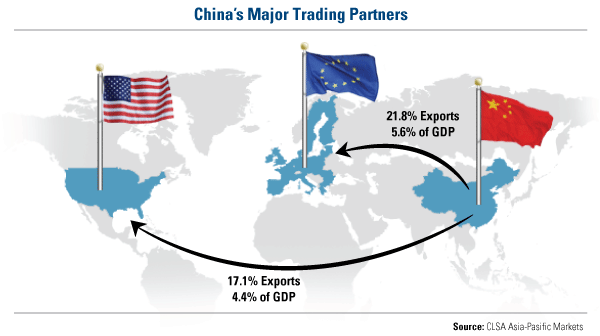
With Europe’s growth in a deep freeze, China is feeling the pain. While many think the U.S. is receiving most of the Chinese-made goods, Europe is actually China’s largest export partner. Nearly 22 percent of China’s exports head to Europe, contributing nearly 6 percent to China’s GDP; only 17 percent of exports from China are shipped to the U.S.
With fewer exports to Europe, China’s GDP growth could be affected, but probably much less than one might think. Listeners of our webcast a few months ago heard Andy Rothman from CLSA explain how China has become less dependent on the world for its growth.
As you can see from the chart below, CLSA had already assumed net exports of goods and services out of China to be negative this year because of slower growth from Europe and the U.S.
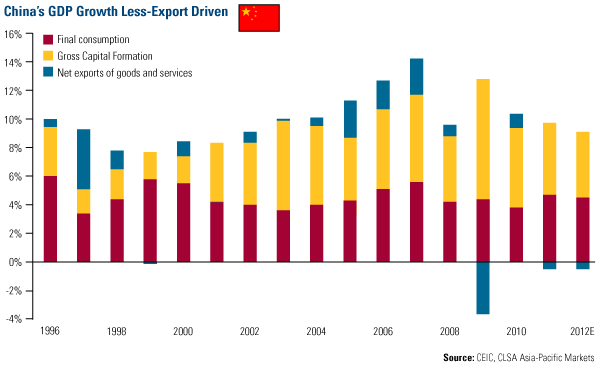
Yet, China clearly has the upper hand in controlling growth. Take a look at what happened in 2009 when exports declined dramatically: the government stepped in with a massive stimulus package devoted to bank lending and infrastructure construction. This effort significantly boosted overall GDP growth and “pushed the Chinese economy out of a deep slump,” says research firm BCA Research.
Despite net exports falling about 4 percent in 2009, GDP actually grew more than 12 percent.
China won’t put the pedal to the metal like it did in 2009, though. Premier Wen Jiabao recently said that the government “should continue to implement a proactive fiscal policy and a prudent monetary policy, while giving more priority to maintaining growth,” according to Bloomberg News. China is more like Goldilocks: The government wants the economy to be not-too-hot or not-too-cold.
The important thing to remember is that the government will want to avoid the expansion that was “associated with the earlier plan that led to higher CPI, asset price inflation and a surge in lending to non-priority projects,” says J.P. Morgan. Rather, the focus is on making sure the country shifts to a “more sustainable trajectory of growth,” says the research firm.
With the renewed eurocrisis, “Chinese authorities are currently facing an extremely complex and unpredictable situation,” says BCA. They’ll continue to monitor the situation and not make any drastic moves; rather, “Chinese authorities will stay on high alert and act promptly to rescue growth in case of external shocks,” says BCA.
New bank loans are down 7.8 percent year-over-year as of May 11, which we believe was the primary reason that China cut the required reserve ratio (RRR) on May 12. J.P. Morgan agrees, saying that together with the RRR cuts, “the seeming start of a new cycle of public spending and consumer stimulus should help to boost loan demand in the economy.”
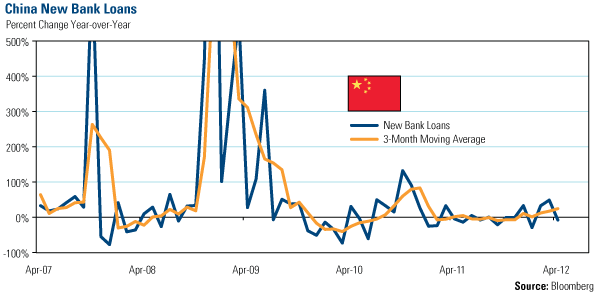
Looking at the five year data above, all factors are near their lows and below their 3-month moving averages. In whatever shape or form, we expect policy easing to continue.
What appears to be overlooked by the mountain of negative economic news is the fact that China’s stock market is outperforming. In May, the A shares were the best-performing equities among all the developed and emerging stock markets we track. For the year, China’s investors still hold onto a gain of 7 percent, putting the country among the top half of the emerging markets and above all developed markets. This bifurcation may be signaling that the worst is behind us.
Keep in mind that negative news in the media may be a danger sign to some people; to Chinese policymakers, it’s a signal to act.
We believe the next government policy cycle might be just around the corner. In fact, we’ve already seen indications of stimulus from China, such as giving the “green” light to car buyers. Perhaps the European Central Bank and the Federal Reserve will follow suit to avoid a repeat of the last few summers.
By Frank Holmes
Frank Holmes is chief executive officer of U.S. Global Investors – a registered investment adviser that manages approximately $2.8 billion. The information provided herein has been provided to MiningFeeds.com by the author and, as such, is subject to our disclaimer: CLICK HERE.
PRESS RELEASE.
June 4, 2012: Vancouver, BC – Balmoral Resources Ltd. (Stock Profile – TSXV:BAR) is proud to announce it received the Best Discovery Record Award from Casey Research as part of their Best in Show Awards at this year’s World Resource Investment Conference currently being held in Vancouver, British Columbia.
For over 25 years Casey Research (www.caseyresearch.com) has provided unbiased, independent research and analysis of companies in the resource sector.
“The Balmoral team is honoured to receive this award from Casey Research in recognition of our discoveries on the Detour Gold Trend over the last year” said Darin Wagner, President and CEO of Balmoral Resources. “Independent recognition from a group as respected and experienced as the Casey team speaks highly of our results to date. With drilling set to resume on our Detour Trend Gold Project we look forward to expanding on our recent successes and continuing to add to our discovery record.”
CompanyFeed™
NEWS RELEASE.
June 1, 2012: Vancouver, BC – Balmoral Resources Ltd. (Stock Profile – TSXV:BAR) today announced additional drill results from the Martiniere East area of the Company’s Detour Trend Gold Project. All four holes for which results were reported intersected significant gold mineralization highlighted by intercepts of 53.00 metres grading 0.88 g/t, 44.60 metres grading 0.97 g/t gold and high-grade intercepts of 6.10 metres grading 5.42 g/t gold and 3.30 metres grading 7.53 g/t gold.
Results include two holes testing gold mineralization the NNW trending Bug Lake Fault and two holes which expand and enhance a fall 2011 discovery in the footwall to the Martiniere West/Central gold system. Drilling is set to resume on the Detour Trend Gold Project during the second week of June, 2012.
To read more – CLICK HERE.
CompanyFeed™
If you would like to receive our free newsletter via email, simply enter your email address below & click subscribe.
CONNECT WITH US
Tweets
Tweet with hash tag #miningfeeds or @miningfeeds and your tweets will be displayed across this site.
MOST ACTIVE MINING STOCKS
Daily Gainers
 Lincoln Minerals Limited Lincoln Minerals Limited |
LML.AX | +125.00% |
      |
GCR.AX | +33.33% |
      |
CASA.V | +30.00% |
      |
AHN.AX | +22.22% |
      |
ADD.AX | +22.22% |
      |
AZM.V | +21.98% |
      |
NSE.V | +21.05% |
      |
DYG.V | +18.42% |
      |
AAZ.V | +18.18% |
      |
GLA.AX | +17.65% |

 Follow us on Twitter
Follow us on Twitter Become our facebook fan
Become our facebook fan








